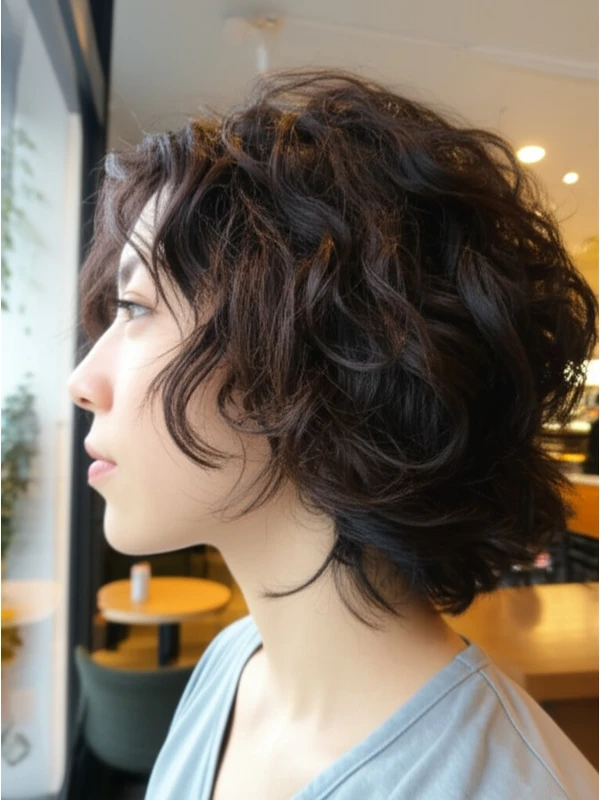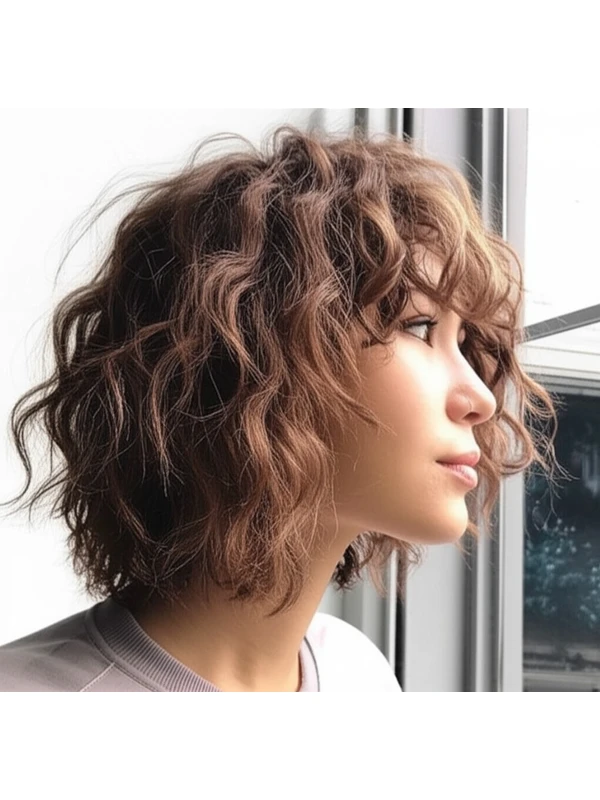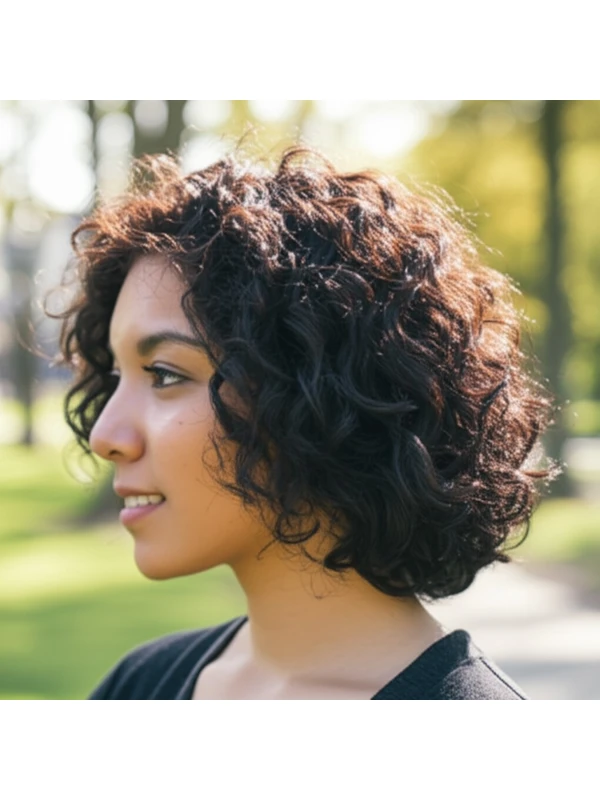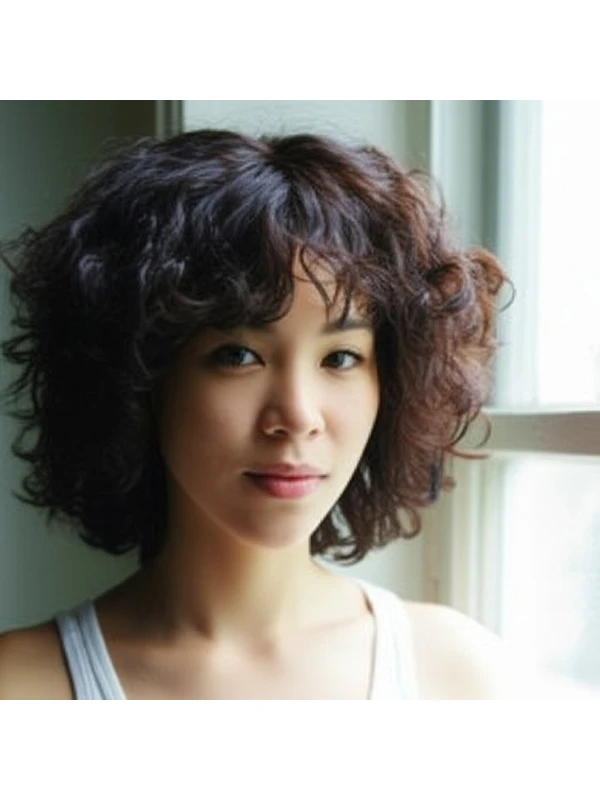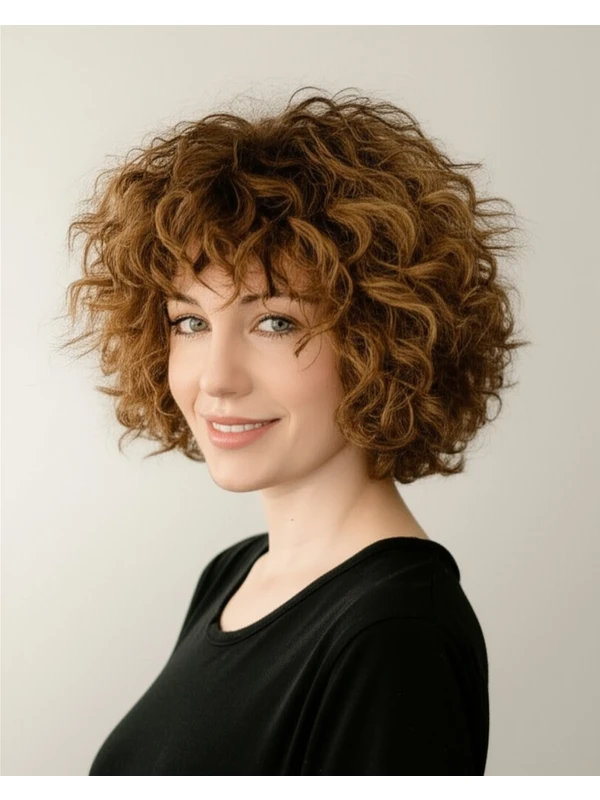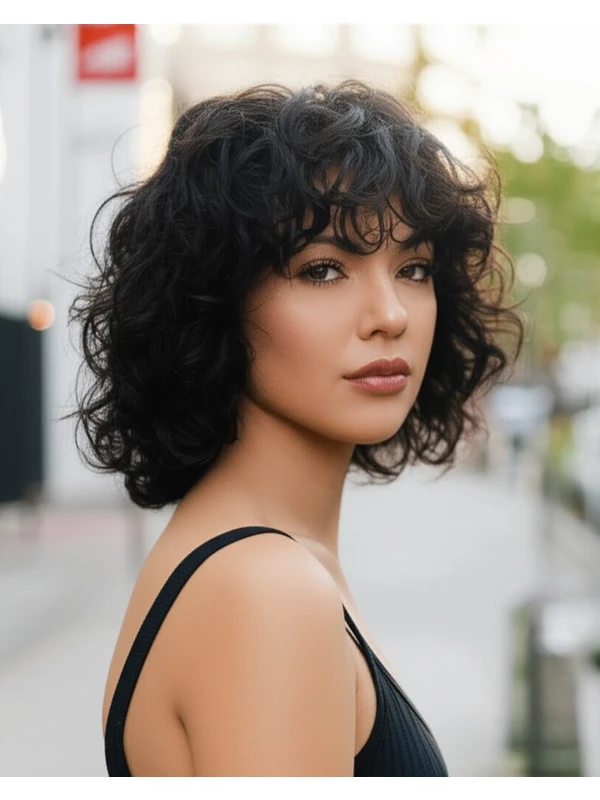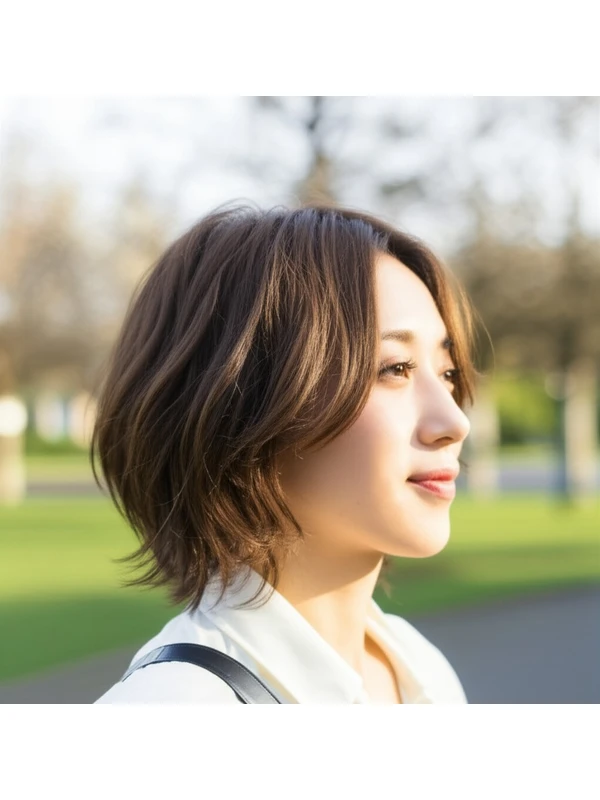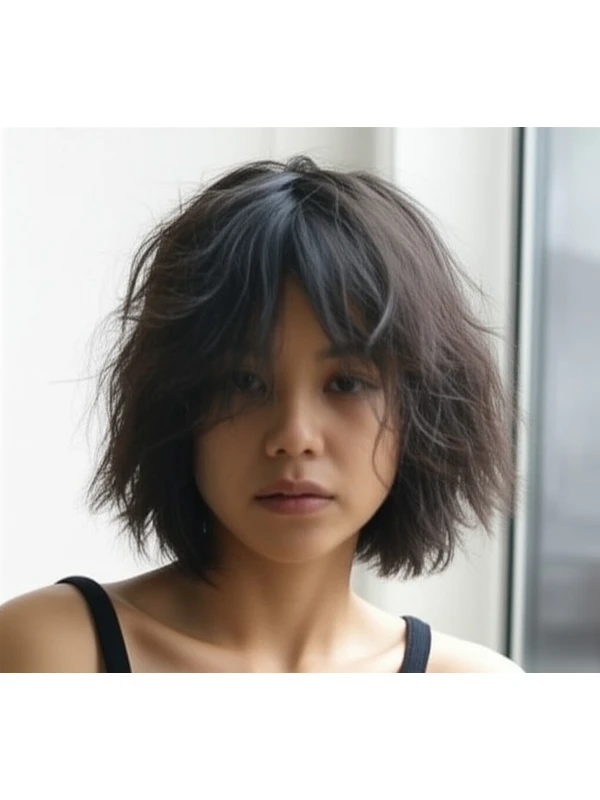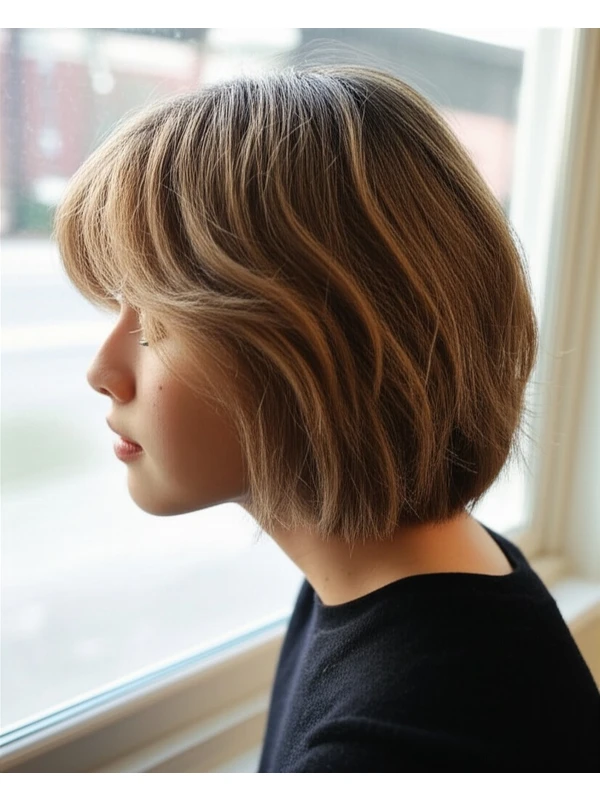#The Curly Wolf Cut: A Wildly Stylish Guide
The wolf cut is having a moment – and for good reason! It’s a bold, textured hairstyle that blends the shagginess of a shag with the layered volume of a mullet. But don't worry; it's much softer than its 70s predecessor. This guide will break down everything you need to know about embracing this playful style, from whether it suits your face shape to how to maintain its wild charm.
#1) Background & Definition: What is a Wolf Cut?
The wolf cut isn’t just about being “messy.” It's a carefully constructed look with specific geometry. Think of it as a short-to-mid length haircut characterized by:
- Heavy Layers: The key! These layers create volume and movement, especially around the crown.
- Choppy Face Framing: Pieces are intentionally left longer to frame the face in a soft, textured way.
- Disconnected Lengths: There's a noticeable difference between the shorter back/sides and the longer top/front sections. This creates that signature "wolf" shape – think untamed and powerful.
- Volume at the Crown: The layering is designed to lift hair away from the head, creating a fuller silhouette.
Typical Length Ranges: Generally falls between 6-14 inches (15-35cm) long. Shorter versions emphasize the choppy layers, while longer ones soften the overall look.
Alternative Names: Sometimes referred to as a "shullet" (a shag/mullet hybrid), or simply a layered wolf haircut.
#2) Face Shape Fit: Finding Your Perfect Wolf
The beauty of the wolf cut lies in its adaptability. However, certain face shapes benefit more than others with strategic styling and fringe choices.
- Oval: Lucky you! The wolf cut is incredibly flattering on oval faces. Embrace the full volume – it enhances your natural symmetry. A curtain bang or wispy fringe looks fantastic.
- Round: Soften a round face by keeping the layers long enough to create length and angles. Avoid too much volume at the cheeks. A side-swept fringe can help elongate the face.
- Square: The wolf cut’s softness helps soften strong jawlines. Layering around the cheekbones is key. A brow-grazing, textured fringe adds a playful touch.
- Heart: Balance a wider forehead with a longer, curtain bang or face-framing layers that fall below the chin. Avoid too much volume at the crown to prevent it from appearing top-heavy.
- Diamond: The wolf cut’s angles can highlight your cheekbones and soften your chin. A wispy fringe softens the look further.
- Oblong (Long): Add width with strategic layering, particularly around the sides. A full, textured fringe will help shorten the face visually.
#3) Body Proportions & Height Guidance: Tailoring to Your Silhouette
The wolf cut isn’t a one-size-fits-all style; adjustments are needed based on your body type.
- Petite: Shorter lengths (6-8 inches) and less volume at the crown will prevent you from being overwhelmed by the hair.
- Average Height: Most lengths work well! Experiment with different volumes to find what suits you best.
- Tall: Longer versions (10-14 inches) can help balance your height. More volume throughout adds visual interest.
- Narrow Shoulders: Create the illusion of broader shoulders by adding more volume at the sides and back, particularly with face framing layers that fall past the shoulders.
- Broad Shoulders: Avoid excessive volume around the shoulder area; focus on layering to create vertical lines for a slimming effect.
- Short Neck: Keep the front pieces longer to elongate your neck visually. Avoid very short layers at the back.
- Long Neck: You can handle shorter lengths and more volume without it emphasizing your neck length.
#4) Works Best With Hair Types & Densities: Curly Considerations!
The wolf cut shines on various hair types, but there are nuances to consider.
- Straight Hair: Will need more layering to achieve the desired texture and movement. A texturizing product is essential for definition.
- Wavy Hair: The natural wave will enhance the choppy layers beautifully! Embrace your texture with a curl-enhancing cream or mousse.
- Curly (2c–3a): This cut really comes alive on curls! The layers create bounce and shape. Be mindful of shrinkage – communicate this to your stylist so they can account for it in the length.
- Coily Hair (4a–4c): The wolf cut provides volume and definition, but requires careful layering to avoid a triangular shape. A skilled stylist is crucial! Shrinkage is significant, so factor that into the desired length.
- Fine Hair: Layers will add body and movement, but be cautious not to over-layer as it can make hair look thinner.
- Medium Hair: The wolf cut works wonderfully with medium density – you have enough hair to create volume without looking sparse.
- Thick Hair: Requires more aggressive layering to remove weight and prevent the style from becoming too bulky.
Shrinkage Factor: Curls and coils can shrink significantly (20-50%). Always communicate your curl pattern to your stylist!
#5) Styling Variations: From Casual Cool to Evening Glam
The wolf cut's versatility shines through in styling options.
- Sleek vs. Textured: A sleek style uses a smoothing serum and blow dryer for a polished look. A textured style embraces the natural layers with sea salt spray or texturizing mousse.
- Middle vs. Side Part: A middle part creates symmetry, while a side part adds asymmetry and visual interest.
- Fringe Variations: Curtain bangs are popular, but wispy, choppy, or even blunt fringes can work depending on your face shape and desired look.
- Occasion Styling: For casual days, air-dry with texturizing product. For the office, a sleek blow dry adds polish. For evening events, add waves with a curling iron or hot rollers.
#6) Maintenance: Keeping Your Wolf Wild
- Trim Cadence: Every 6-8 weeks to maintain shape and prevent split ends.
- At-Home Routine: Gentle shampooing (2-3 times per week), moisturizing conditioner, leave-in conditioner for hydration.
- Heat vs. Air Dry: Air drying is ideal for preserving natural texture. If using heat, always apply a heat protectant.
- Product Checklist:
- Sulfate-free Shampoo & Conditioner (suited to your hair type)
- Leave-in Conditioner (especially important for curls/coils)
- Texturizing Mousse or Sea Salt Spray (for texture and volume)
- Hair Oil or Serum (to tame frizz and add shine)
- Estimated Daily Styling Time: 15-30 minutes, depending on styling complexity.
#7) Grow-Out Roadmap: Evolving Your Look
- Months 1-3: The initial shape is most dramatic. Focus on maintaining the layers with regular trims.
- Months 3-6: The front pieces will lengthen and soften the overall look. Consider adjusting your fringe style.
- Beyond 6 Months: You can experiment with longer lengths or more subtle layering to evolve the style further.
#8) Color Pairings: Enhancing Your Wolf's Personality
- Cool Undertones (ash blonde, cool brown): Enhance the edgy vibe of the wolf cut.
- Warm Undertones (honey blonde, caramel brown): Add warmth and dimension to your hair.
- Low-Commitment Options: Balayage or highlights can add depth without a drastic color change. Face-framing money pieces are also very flattering!
#9) Season & Occasion Guide: Adapting Your Style
- Spring/Summer: Embrace the airy feel with lighter layers and beachy waves.
- Fall/Winter: Add warmth with richer tones and a more textured, tousled look.
- Work: Sleek styling or a polished side part conveys professionalism.
- Weddings/Parties: Romantic waves or an updo that showcases the layers adds elegance.
- Formal Events: A sleek, sophisticated style with minimal texture can be stunning.
#10) Cost & Time: Salon Investment
- Salon Time: Typically 1.5-3 hours, depending on hair length and complexity of layering.
- Estimated Price Range: Expect to pay a bit more than for a standard haircut – somewhere in the mid to upper price range at most salons.
#11) Pros & Cons: The Real Deal
Pros:
- Highly customizable
- Adds volume and movement
- Trendy and stylish
- Can flatter many face shapes
Cons:
- Requires regular trims
- Styling can be time-consuming (depending on desired look)
- Not ideal for very fine hair without careful layering.
#12) Salon Consultation Script: Your Checklist
Here are some prompts to help you communicate your vision to your stylist:
- "I'm interested in a wolf cut, but I’m concerned about [specific concern – e.g., volume at my cheeks]."
- “Can we discuss how the layers will work with my curl pattern/hair density?”
- "I like the idea of a [curtain/wispy/blunt] fringe—what would you recommend for my face shape?"
- "How can we adjust the length to account for shrinkage if I have curly or coily hair?"
- "Can you show me examples of wolf cuts on people with similar hair types and face shapes as mine?”
#FAQs: Your Burning Questions Answered
- Is a wolf cut hard to style? It depends! A textured look is relatively easy, but achieving a sleek finish requires more effort.
- Can I get a wolf cut if my hair isn't very layered already? Absolutely! The stylist will create the layers for you – that’s part of the process.
- What if I don't like bangs? You can still have a wolf cut without bangs! Just request longer face-framing pieces instead.
- Will this look good on short hair? Yes, but it will be more cropped and edgy than a longer version.
- How different is the wolf cut from a shag haircut? Both are layered styles, but the wolf cut has more disconnected lengths and a stronger "wolf" shape.
- Can I do this myself at home? While possible for experienced DIYers, it's best left to a professional, especially with curly or coily hair. Incorrect layering can be difficult to fix!
